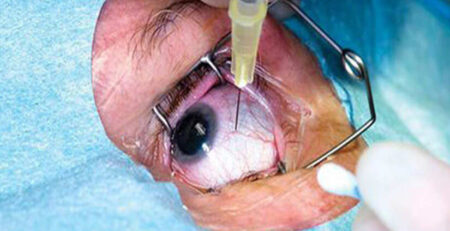What is Retinal Detachment? How to Prevent It?
Retinal detachment occurs when the retina separates from the underlying layers of the eye. This detachment results in vision loss as the retinal layers lose their blood supply. However, it can be corrected with retinal detachment surgery.
Let’s understand in depth what retinal detachment is and how it can be prevented.
What is Retinal Detachment?
The retina is located on the back of the eye. The lens concentrates a picture on the retina when light passes through the eye. The retina turns the image into signals that are sent to the brain via the optic nerve, and vision is formed.
Retinal detachment is a serious eye condition that occurs when the retina is pulled away from its usual position due to various issues like a retinal tear, or inflammation or swelling; or medical conditions like diabetes and hypertension (high BP) that can cause fibrous pull over the retina.
When the retina detaches from the back of the eye, the fluid enters the inner part of the eye and disrupts the nutrients and oxygen supply to the retinal cells, leading to potential vision loss.
There are three main types of retinal detachment:
Rhegmatogenous Retinal Detachment: This is the most common type and occurs when a tear or hole forms in the retina, enabling fluid to enter from the inner part of the eye and accumulate underneath the retina, causing it to detach.
Tractional Retinal Detachment: It occurs due to scar tissue pulling the retina from its normal position. Diabetes is the primary reason for tractional retinal detachment.
Exudative Retinal Detachment: This type of retinal detachment occurs due to fluid accumulation, even if there is no retinal tear. Usually, it occurs due to the leakage of blood vessels or inflammation.
How to Prevent Retinal Detachment?
Unfortunately, retinal detachment cannot always be prevented, especially in cases where risk factors are present. If you are experiencing a retinal detachment issue, then retinal detachment surgery is the only treatment option. The surgical options may include pneumatic retinopexy, scleral buckle, and vitrectomy.
However, there are a few steps you can take to potentially reduce the risk:
- Wear Protective Eyewear: If you are engaging in sports activities, handling heavy objects, or welding tools, use protective eyewear.
- Manage Diabetes: If you are a diabetes patient, control your blood sugar level and get regular eye checkups and treatment if needed.
- Get Dilated Eye Exams: Regular dilated eye exams can reveal your eyes’ genuine condition, ensuring that any potential problems like retinal holes/tears are identified and handled as soon as possible.
- Monitor Symptoms: If you notice sudden flashes of light, a sudden increase in floaters, or a shadow or curtain-like effect moving across your visual field, seek medical attention immediately. These could be signs of a retinal tear. A retinal tear if treated in time, can prevent retinal detachment.

Retinal detachment is a serious eye condition that can lead to vision loss if not treated promptly. Retinal detachment surgery can only help you treat this condition. By understanding its causes, symptoms, and preventive measures, you can take proactive steps to safeguard your eye health.
If you notice the symptoms of retinal detachment, book your consultation with Dr. Anisha Gupta, a reputed eye specialist in Delhi with a specialization in retinal diseases.











